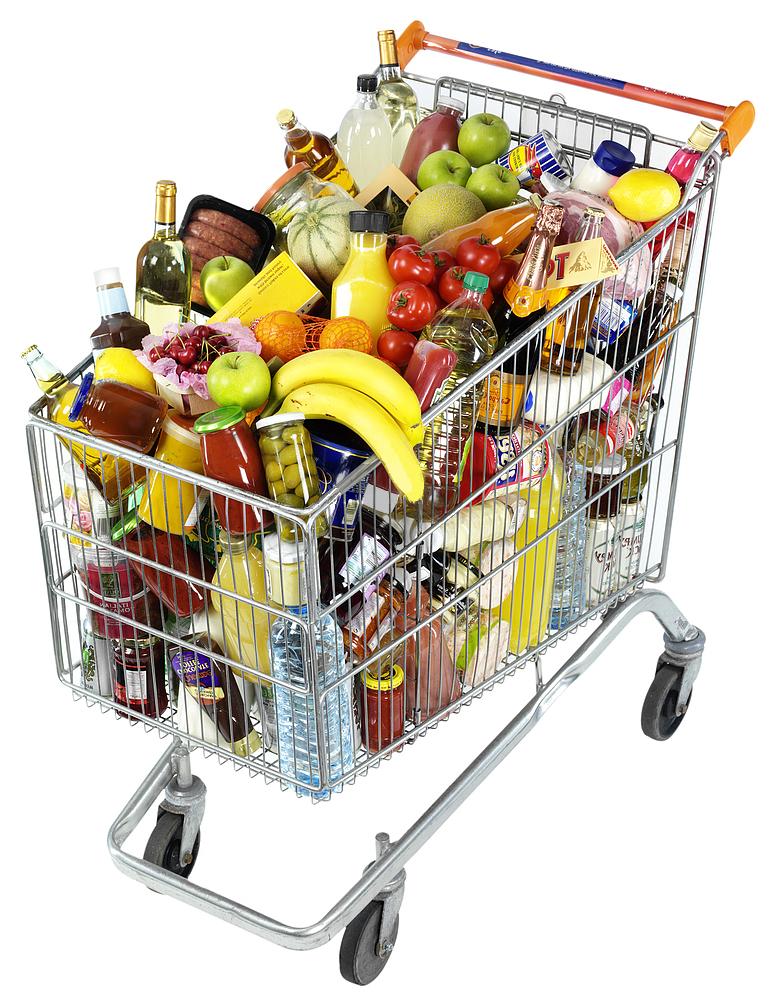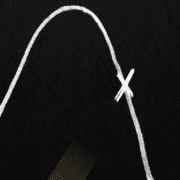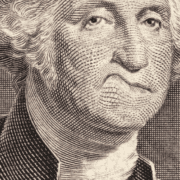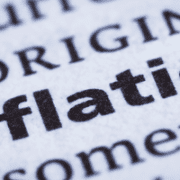Yield Purchasing Power: $100M Today Matches $100K in 1979
I wrote a story about poor Clarence who retired in 1979, and even poorer Larry who retired last year. I created these characters to challenge the notion of calculating a real interest rate by subtracting inflation. The idea is that the decline of a currency can be measured by the rate of price increases. This price-centric view leads to the concept of purchasing power—the amount of stuff that a dollar can buy. It’s the flip side of prices. When prices rise, purchasing power falls.
Recall in the story, Clarence retired in 1979. At the time, inflation was running at 14% but he could only get 11% interest. Real interest was -3%, and Clarence had a problem. He was losing his purchasing power.
Suppose Clarence bought gold. The purchasing power of gold held steady for the rest of his life (see this chart of oil priced in gold). Gold does solve this problem. However, gold has no yield. Clarence is only jumping out of the frying pan and into the fire. Sure, he escapes dollar debasement, but then he gets zero interest.
Let’s look at how zero interest impacts Larry. He makes $25/month on his million dollars. Obviously he can’t live on that. So he gives up his nest egg, for eggs. For a year, he feasts on omelets. Since inflation was slightly negative, the same swap in 2015 nets him the same plus a few additional quiches.
Through the lens of purchasing power, we don’t focus on the liquidation of Larry’s wealth. We ignore—or take it for granted—that he’s trading his life savings for bread. We only ask how many loaves he got.
If you had a farm, would you consider trading it away, to feed your family for a year? I hope not. A farm should grow food forever. Its true worth is its crop yield, not the pile of bacon from a one-time deal.
How perverse is that? It’s nothing more than what zero interest is forcing Larry to do.
A dollar still buys about as much as it did last year. Larry’s purchasing power didn’t change much. However, debasement continues to wreak its destruction. Steady purchasing power does not mean that the dollar is holding its value.
It means that prices are wholly inadequate for measuring monetary decay.
Our monetary disaster becomes clear when we look at the collapse in yield purchasing power. This new concept does not tell you how many groceries you can get by liquidating your capital. It tells how much you can buy with the return on it.
In 1979, Clarence’s $100,000 savings earned enough to support his middle class lifestyle. In 2014, Larry’s million dollars didn’t earn enough to pay his phone bill. To live in the middle class, Larry would need over a hundred million bucks. That’s a pitiful income to make on such a massive pile of cash. It reveals a hyperinflation in the price of capital, which has gone up 1100X in 35 years.
It also shows that the productivity of capital is collapsing. Back in Clarence’s day, businesses earned a high return on capital. It was high enough for Clarence to get 11% interest in a short-term CD. Unfortunately, the dollar rot is in the advanced stage now. There is scant interest to be earned. Return on capital is low, and so borrowers can’t pay much.
Retirees suffer first, because they can’t earn wages. Normally they would depend on interest, but now they’re forced to live like the Prodigal Son. They consume their wealth, leave nothing for the next generation, and hope they don’t live too long. Zero interest rates has reversed the tradition of centuries of capital accumulation.
Purchasing power may look fine, but yield purchasing power shows the true picture of monetary collapse.
This article is from Keith Weiner’s weekly column, called The Gold Standard, at the Swiss National Bank and Swiss Franc Blog SNBCHF.com.








Excellent article Keith. It always surprises me that retirees are not complaining about ZIRP.
This subject really rankles. I keep threatening all my banker friends with just asking for cash for my $100K CD’s. I had planned to retire in 2013 with 12- 1 yr. CD’s of $100K each rolling over every month. At .2 to .6% a $1.2 million nest egg returns a monthly income of $400. Chump change and not what I had planned. 80% of the population doesn’t notice because they don’t have enough savings to matter. When I do a thought experiment and recommend that all savers take their “money” out in cash, you realize you STILL don’t have any power. They can just print up some more reserves for the banks. My friends were smarter. They are drawing 4% from their Vanguard Retirement 2015 Funds that are 60% stocks and 40% bonds. But who knows when those funds will crash 20, 50, or 90%? The revolutionary act is to buy gold and silver but I know when the authorities need it, they will “ask” for it back. I appreciate the clear exposition of the problem but as +60year old savers, we are hardly interested in blowing up the monetary system because it is “unfair”.
Excellent article, Keith. And excellent response, waknpak.
Here’s what I would do, waknpak. I’d convert my FRN CDs to gold and silver, except for 1 year’s cash. If you were hoping/planning on receiving 5%, I’d keep 60k in cash out. Then, after a year, you could sell enough gold and silver for another year’s expenses. Rinse and repeat. If, perchance, the monetary system gets sorted out, you could sell larger amounts of gold and silver for cash and stash it for yield. If it doesn’t get sorted out, you’ve got a metals lifeboat to get you across to the next currency. My thinking is, if you’ve got to consume your seed corn anyway, you might as well keep it in a form that won’t spoil. Comments, Keith?
Thanks for the good comments.
waknpak: I agree that blowing up the monetary system is bad. And not just for older people. I cringe every time someone casually uses the term “reset”. They should think about the great Roman reset of 476AD. Sure, it did cleanse away the corruption. But at what price?
davidnrobin: I have to be careful not to give what the SEC considers investment advice. In general, I agree. You have to liquidate your farm bit by bit. And in the meantime, you hold whatever asset is least likely to lose value, or more likely to gain value. You know my thought about gold: it does not gain or lose value. It is the meter stick of value against which all assets are measured.
What I think it reveals is a hyperinflation in the level of financial repression. It is equivalent to bailing in by stealing depositors funds to redistribute to the cartel and other parasitic grifters (like massively oversized government)! What rate of positive real interest would one need to earn on deposits in order to closely mimic an honest money gold standard should be the question? Surely the deflation produced through innovation and productivity competition in an honest money (gold standard) system equates to a high enough purchasing power yield to curtail most of the glaringly obvious malinvestment we see today , wouldn’t it? Honestly, isn’t the entire point to the current monetary system to slave out all the ignorant masses in a confusing enough smoke and mirrors fashion that the sheople don’t even realize they are slaves, to provide an extremely fine life for the cartel and other parasitic grifters?
Keith, can you quantify exactly what interest rate you think is necessary for preventing the monetary decay you speak of? Also, how can that rate be sustainable with the current level of one third of the population (private sector employment) in this country being slaved out to support all others and service the debt?
Bob: You got it, financial repression is a good term. It’s much better than the prevailing “monetary policy”.
I don’t think there’s an interest rate in irredeemable paper currency that is in any way equivalent to what would occur in a free market (i.e. gold standard). In my theory of interest and prices, I show that there is no such thing as a market in interest rates in irredeemable paper. The whole thing is inherently unstable.
One of my points in this series on YPP is that whether or not prices fall, purchasing power cannot be considered a yield.
It seems to force once to consider owning income producing assists such as businesses or rental real estate. Unfortunately, business ownership and landlord facing increasing pressures, taxes and regulation going forward. Where has the low fruit gone?